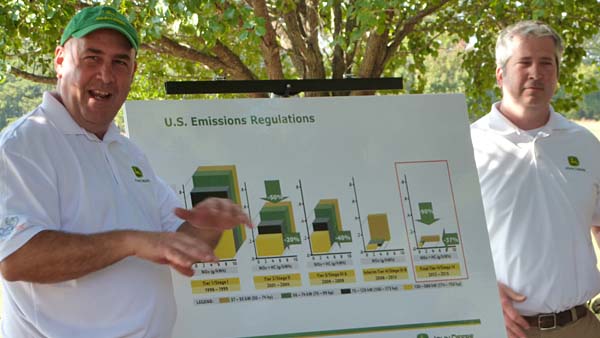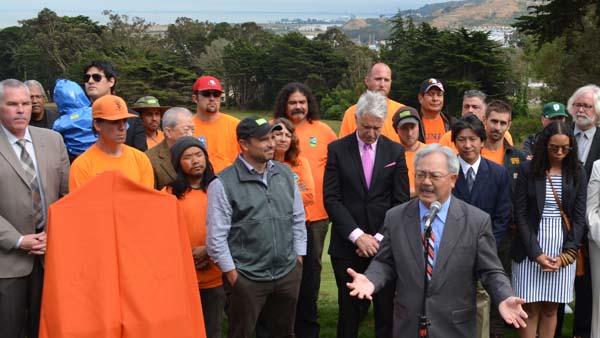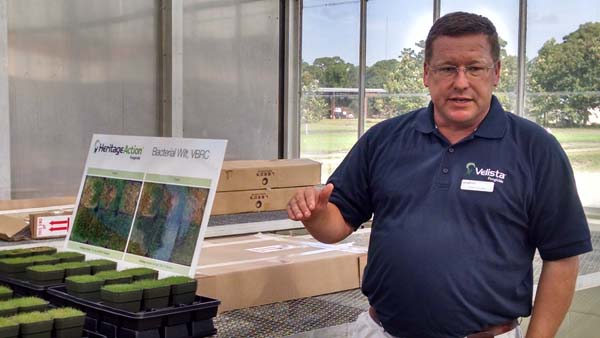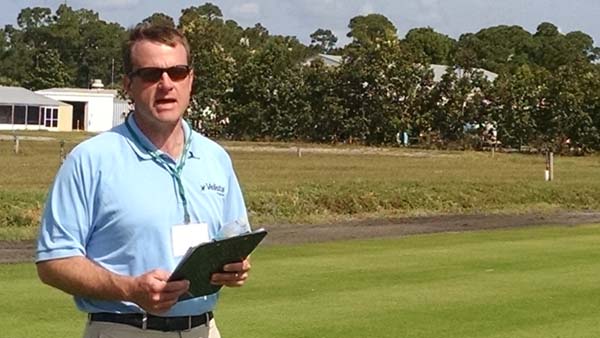
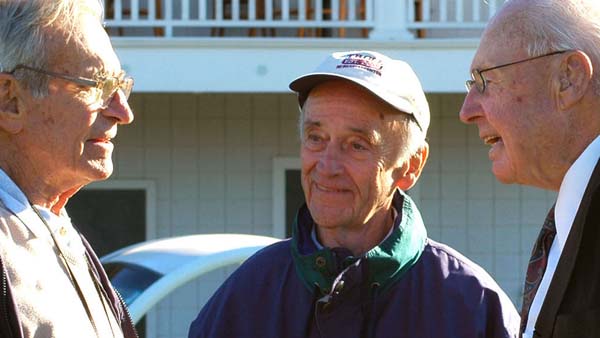
"Often times, he'd take students and pull them aside in their first year and council them on where they were going for internships, and how important that decision was on the rest of your career," said Steve Curry, superintendent at Torrington Country Club in Goshen, Connecticut. "He brought me into his office one day and told me ?I'd hate to see you stay close to home and your mommy. I'd rather see you experience something far away from home.' He made the call for me to Cherry Hills in Denver, and it was the best experience in my career."
Troll, who retired from UMass in 1985, but never stepped away from serving the university, died June 14 at his home in Summerfield, Florida. He was 95. A native of Patterson, New Jersey, Troll earned a bachelor's degree at the University of Rhode Island and masters and doctorate degrees from UMass. A veteran of the U.S. Navy during World War II, he is remembered by former students for bringing a little bit of the military to the classroom, but only because he expected much from his students and wanted them to share his high standards. "If he had an 8 a.m. class, at 8 he locked the door, and if you were late, you missed class," said UMass professor of entomology Pat Vittum, Ph.D. "Because he served in the Navy, he did not suffer fools lightly. He had high expectations, and his students had to show up and do the work. At the time, I don't think any of them particularly loved him for that, but later on they did." Troll took over the UMass turf program in the Stockbridge School of Agriculture in 1957, including the Winter School for Greenkeepers, which predecessor Lawrence Dickinson founded in 1927 and today is the country's oldest formal curriculum for turf managers. During his tenure at UMass, he founded the Massachusetts Lawn and Turf Council Conference, known locally as the Mass Turf Conference, which eventually morphed into the larger New England Regional Turf Foundation. He was the recipient of the USGA Green Section Award in 1991 and was inducted into the Western Massachusetts Golf Hall of Fame in 2013. "I still remember my first class with Joe," said UMass alum and retired superintendent Ted Horton. "Once we got past the Navy stories, we were all carefully informed that "it takes three things to grow grass - drainage, drainage and drainage. Not too many years later I found that to be not completely accurate. All it seemed to take was a crack in the sidewalk." After his retirement in 1985, he remained active in fundraising activities for the university, including raising money to start the turfgrass research center in South Deerfield that bears his name. Those fundraising efforts to build the Joseph Troll Turf Research Center resulted in the creation of a turfgrass alumni group and an annual fundraiser tournament honoring its namesake. "Joe Troll was a great teacher and mentor to young superintendents and frankly to old, has-been superintendents as well," Horton said. "He was always accessible and had a wonderful sense of humor. He was more like a friend than a professor and kept in touch with his students for years after graduation. For decades, he was at the forefront of turf research and turfgrass management teaching and it is fitting that the turf research station at UMass Amherst is named after him." Throughout his career, Troll worked tirelessly on behalf of his students to place them at golf courses throughout the country and around the world. "He did that better than anyone," Vittum said. "If someone was suited for Winged Foot, he made sure that person made it to Winged Foot. It was almost as if he had his own headhunting firm." The quality of education taking place at UMass under his watch often resulted in golf course managers around the country calling him looking to fill vacancies. "Once he started that, he'd have greens chairmen calling him to request a Stockbridge student. That really snowballed," said Roy Mackintosh, a retired superintendent who graduated from UMass in 1964. "He placed superintendents all over the world. It was a who's who of golf courses where he placed students." UMass alumni working locally often were called up to host field trips for Troll's classes. Always at Troll's side throughout his career was wife Lonnie, who helped him with research projects, running turf conferences or organizing his notes. "They had a great connection," Mackintosh said. "She was always there by his side at conferences and running his research programs. She was My Gal, Friday. She did everything to back him up. They were quite a team."
- Read more...
- 4,225 views

